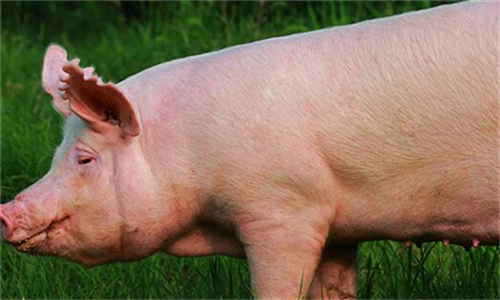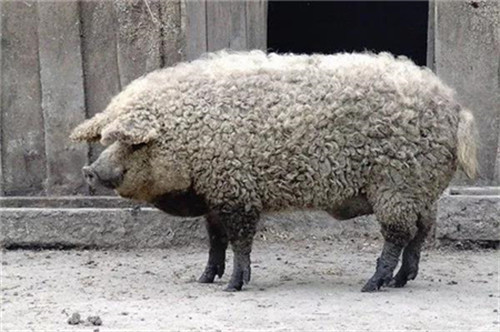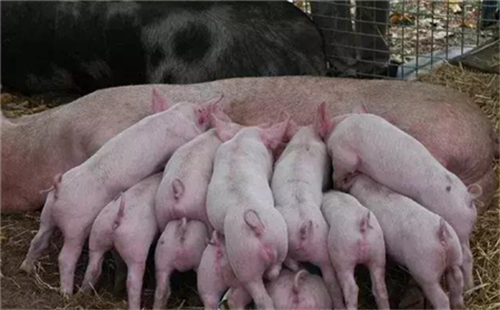What are the causes of parasitic diseases that cause vomiting in pigs? How to prevent and control?
Vomiting is a protective physiological reaction of pigs, which can be caused by some febrile infectious diseases, toxic diseases, digestive tract diseases, parasitic diseases and so on.
Porcine gastroenteritis
A kind of nematode caused by Ascaris lumbricoides (spiropharyngostoma), Ascaris dentata, Alternaria, Ximeng nematodes of the genus Ximonorhynchus and Tetranychus (pathogenic jaw nematodes) parasitized on the stomach of pigs. The disease is endemic.
The symptoms of pigs were not obvious when a small amount of gastric nematodes were parasitized. In sick pigs, especially young pigs, when a large number of gastric nematodes are parasitized, gastric mucosa inflammation, loss of appetite, increased thirst, abdominal pain, vomiting, weight loss, anemia, symptoms of acute and chronic gastritis, lethargy, nutritional disorders, growth obstruction, black feces or mixed blood color.
Porcine toxoplasmosis
Also known as toxoplasmosis or toxoplasmosis, is caused by toxoplasmosis zoonosis. The initial body temperature of diseased pigs rose to 40 ℃ ~ 42 ℃ and stayed for 7 to 10 days. The piglets showed loss of spirit and appetite, dry feces, mucus and diarrhea of weaned piglets. After that, he suffers from abdominal or dog sitting breathing, coughing, vomiting and a small amount of nasal juice. The body surface lymph nodes, especially the inguinal lymph nodes were obviously enlarged, and blood stasis spots appeared in the ear, nose and lower part of the body at the end of the stage. Finally, the body temperature dropped sharply and died, and the sick sows miscarried or gave birth to stillbirth.
Porcine Strongyloides
It is caused by the parasitism of Gram-like nematodes in the small intestine of piglets, which is the most harmful to piglets, especially 3-and 4-week-old piglets. The disease occurs frequently in warm and rainy seasons, which is one of the causes of dysentery in piglets.
Sick pigs vomit, suffer from enteritis and diarrhea, and then lose weight. When larvae cause infection through the skin, they often cause eczema. When entering the lungs, it causes bronchitis, pneumonia and elevated body temperature of pigs; if it is moved into the heart, brain and spinal cord, pigs can die of acute death, and in severe cases, sick pigs die because of extreme weakness.
It is suggested that self-propagation and self-cultivation are recommended.
It is suggested that pig farms should be self-propagated and self-raised. If pigs are introduced from other fields, a full-in-all-out breeding method should be adopted to prevent the introduction of parasites. When you really need to buy live pigs, you should buy them from places where there is no epidemic, and check the quarantine certificate before purchase. The purchased pigs were kept in isolation for more than 2 weeks, and the feces were examined to determine whether they were parasitic or not. If a disease is found, it must be dewormed for 1 or 2 times and re-examined, and no disease can be transferred to the production area only after a comprehensive test.
Formulate a prevention and control plan
Pig farms should, under the guidance of veterinarians, formulate parasite control procedures according to the epidemic situation and regularity of parasitic diseases in this area or our factory, the medical history of pig farms, pig breeds, age, feeding and management. Live pigs raised locally can be dewormed twice a year at an appropriate time. The prevention and control of parasitic diseases should be regularized and institutionalized. Do a good job of parasite monitoring before deworming in large-scale pig farms, and take the monitoring results as the basis for deworming.

Elimination of intermediate hosts
Eliminating intermediate hosts and cutting off transmission vectors are effective measures to prevent the spread of parasitic diseases. Many parasites (such as trematodes, tapeworms, acanthocephalus and some nematodes) that are susceptible to pigs need the participation of intermediate hosts and vectors in the process of development. Using chemicals or biological methods (cultivating natural enemies of intermediate hosts, such as ducks, fish, etc.), intermediate hosts can be eliminated and media cut off. Pig farms (households) prohibit keeping cats, dogs and other pets and regularly do a good job of killing rats, mosquitoes, flies, cockroaches and insects, so as to reduce the incidence of parasitic diseases.
Environmental disinfection
The clothes and utensils of breeders can be heated and disinfected; barns and transport vehicles can be disinfected with fenvalerate, diformamidine, monoformamidine, mijing and other sprays. The resistance of immature eggs to dry and high temperature environment is weak, so the piggery should use concrete surface, and the enclosure should be sunny.
Immune inoculation
The use of new technologies and new achievements to prevent parasitic diseases in pigs, such as Toxoplasma gondii vaccine, can produce immunity in pigs through artificial inoculation, so as to achieve the purpose of immune prevention of porcine toxoplasmosis.
Do a regular inspection.
In large-scale pig farms, parasitic diseases should be tested regularly, and breeders should also carry out regular tests or health checks to monitor the infection of parasites in pigs at different stages and different periods.
Scientific deworming
The following essentials should be mastered in deworming:
One is fasting before deworming. In order to facilitate the absorption of deworming drugs in pigs, they should fast for 12 to 18 hours before deworming.
The second is to select anthelmintic drugs with high efficiency, broad spectrum, low toxicity, good palatability, convenient administration, no residue and not easy to produce drug resistance, such as ivermectin, avermectin, insect repellent powder, albendazole and levamisole. Attention should be paid to the dosage, not excessive or insufficient.
The third is: continuous use of drugs, in order to improve the effect of deworming, it is necessary to use deworming drugs for 2 or 3 times. For some surface parasites, such as scabies mites, deworming drugs can only kill the body, not the eggs. The correct method of medication is to use the medicine again at an interval of one week after the first deworming, to prevent the recurrence of the disease.
Fourth, deworming should be carried out in places with isolation conditions in order to clean up the feces of diseased pigs.
Fifth, pay attention to the time of deworming. Generally speaking, it should be repelled before the sexual maturity of the worm, in order to prevent the mature adult from excreting eggs and larvae. Deworming should be carried out in autumn and winter, when deworming is conducive to the safe winter of livestock and poultry, while autumn and winter is colder, which is not conducive to the survival and development of most eggs or larvae, and can reduce pollution.
Sixth, before large-scale deworming, conduct small-group experiments, gain experience, confirm efficacy and ensure safety, and then carry out whole-group deworming.
Seven is: pay attention to observe the effect of deworming. After administration, attention should be paid to the reaction of pigs, and corresponding measures should be taken immediately if poisoning occurs, such as vomiting, diarrhea and other symptoms.
Eighth: strictly implement the provisions of the drug withdrawal period to prevent drug residues. Generally speaking, drugs should not be used to disinfect insects three weeks before slaughter.
- Prev

The identification and diagnosis of 10 kinds of porcine diarrheal infectious diseases are too complete, hurry up to collect them!
The identification and diagnosis of 10 kinds of porcine diarrheal infectious diseases are too complete, hurry up to collect them!
- Next

Do you know all the 11 major diseases of sows after parturition?
Do you know all the 11 major diseases of sows after parturition?
Related
- On the eggshell is a badge full of pride. British Poultry Egg Market and Consumer observation
- British study: 72% of Britons are willing to buy native eggs raised by insects
- Guidelines for friendly egg production revised the increase of space in chicken sheds can not be forced to change feathers and lay eggs.
- Risk of delay in customs clearance Australia suspends lobster exports to China
- Pig semen-the Vector of virus Transmission (4)
- Pig semen-the Vector of virus Transmission (3)
- Five common causes of difficult control of classical swine fever in clinic and their countermeasures
- Foot-and-mouth disease is the most effective way to prevent it!
- PED is the number one killer of piglets and has to be guarded against in autumn and winter.
- What is "yellow fat pig"? Have you ever heard the pig collector talk about "yellow fat pig"?

